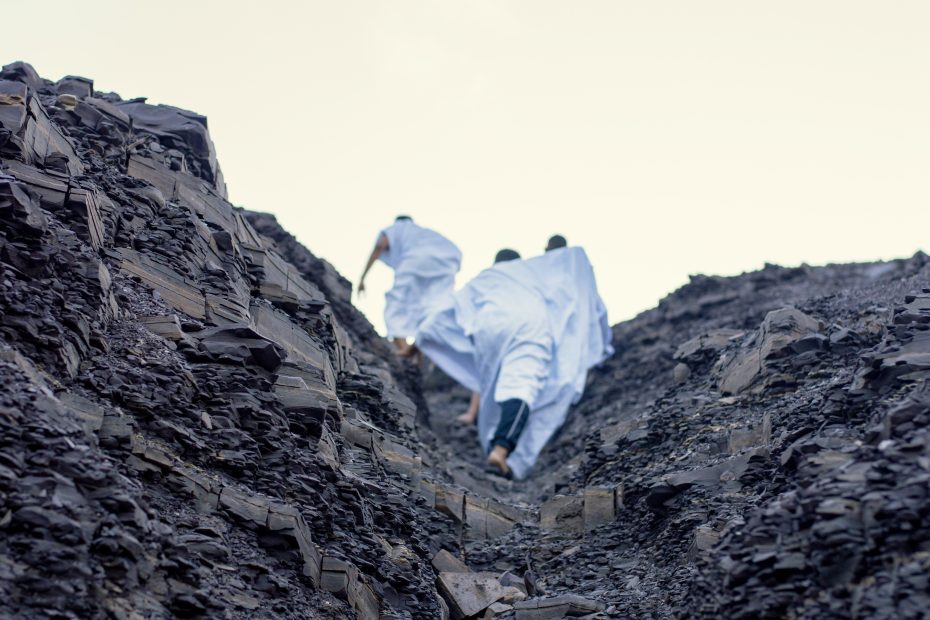First, it’s important to understand the significance of Mauritania’s ancient heritage. Situated between the Maghreb and sub-Saharan Africa, Mauritania was home to some of the oldest complex societies south of the Sahara desert. This civilization emerged around 1500 BCE, much earlier than researchers previously thought possible in the arid conditions. The architects, craftsmen, traders, and farmers who populated Mauritania’s cities and villages developed advanced capabilities in ironworking, architecture, rock art, and other areas. Unlocking the secrets of this society can shed light on early state formation and cross-cultural connections across the Sahara region.
Several ancient sites dotted across Mauritania’s desert landscape provide clues about daily life and beliefs among these early inhabitants. Chinguetti, an oasis city, contains a historic library with rare ancient Islamic manuscripts. The foundations of homes and mosques dating back many centuries are also preserved in this area. Similarly, the old trading post of Ouadane reveals a culturally rich outpost along ancient trans-Saharan trade routes. Meanwhile, the ruins of Tichitt consist of several hundred stone settlements clustered around an extinct lake. Scholars hypothesize it was once home to thousands of people and may have even served as an early governmental capital.
Other intriguing traces of Mauritania’s lost civilization include the Richat Structure, a massive mineral formation visible from space that was important for ancient astronomy and navigation. There are also thousands of rock art and engravings scattered across the desert, with recurring images of cattle that suggest the people relied heavily on raising livestock. These are just some of the many pieces of Mauritania’s ancient puzzle that researchers are continually putting together.
One of the greatest mysteries surrounds what became of Mauritania’s early inhabitants. Around 300 BCE, there was a drastic decline and villages were abruptly abandoned. Entire areas lost 99% of their population. What happened to the people? Likely culprits include overgrazing, drought, the use of non-renewable resources, or shifting trade activity. It’s also possible that political instability and warfare contributed to the downfall. Unfortunately, the true reasons may remain forever unknown.
Although their story ended mysteriously, Mauritania’s ancient culture left a lasting contribution. Their strong social hierarchy and centralized settlements laid the groundwork for later kingdoms and empires across the region. Metallurgy using specialized furnaces spread to other African civilizations. Even after the decline, their cities continued to serve as important commercial and learning centers, especially Chinguetti and Ouadane which survived as nexuses for trade and Islamic scholarship.
Ongoing research is deepening our grasp of this lost world and how it shaped those that followed. Recent excavations have uncovered artifacts like jewelry, tools, and funerary remains that provide insights about daily habits and rituals. New technologies like satellite imagery and aerial drones are finding additional settlements buried under Mauritania’s sands. Step by step, the secrets of the past are coming to light.
In summary, Mauritania’s ancient inhabitants built a rich civilization that deserves recognition as one of Africa’s great early cultures. Their architectural accomplishments, gathering of written knowledge, fine crafts, and trade connections testify to an advanced society. While many aspects remain mysterious, continued exploration of Mauritania’s antiquities can fill in the story of this forgotten people. Their legacy persists even today across the region if one knows where to look beneath the desert surface. With more archaeological work, hopefully we can one day fully unveil and honor the lost world of Mauritania’s ancient civilization.
FAQs
What time period did Mauritania’s ancient civilization flourish?
It emerged around 1500 BCE and declined around 300 BCE, reaching its peak between about 1000 BCE and 200 BCE.
What evidence is there of complex social structures?
There are large centralized settlements, buildings and monuments requiring organized labor, and production of luxury/specialized goods indicating hierarchies.
What role did trans-Saharan trade play?
Sites like Chinguetti and Ouadane were important commercial hubs linking sub-Saharan Africa and the Mediterranean, facilitating exchange of ideas and goods.
What technologies did they have?
There is evidence of skilled ironworking, copper smelting, pottery production, stone building, leatherwork, and manufacture of glass beads.
How can we keep learning about this civilization?
Continued archaeological excavations, analysis of artifacts and rock art, study of manuscripts/texts, use of aerial/satellite imagery to identify sites, and advancing scientific testing of materials.
